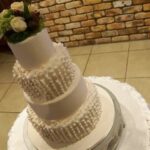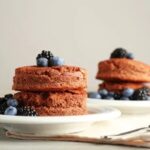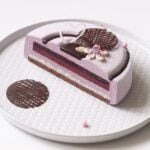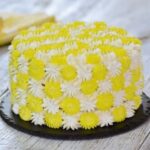Are you looking to elevate your cake decorating game? Learn how to make buttercream frosting for cake decorating and unlock the potential of creating beautiful and delicious cakes. Buttercream frosting is a versatile and essential component in cake decorating, allowing for endless design possibilities to suit any occasion or theme.
The creamy and smooth texture of buttercream frosting serves as a blank canvas for creative cake designs, making it a staple in the world of baking and pastry arts. Whether you are a professional baker or an enthusiastic home cook, mastering the art of making buttercream frosting will take your cake creations to the next level.
In this comprehensive guide, we will cover everything you need to know about making buttercream frosting for cake decorating, from the essential ingredients to step-by-step instructions, expert tips for success, creative decorating techniques, troubleshooting common issues, and proper storage methods. With our guidance, you’ll gain the confidence to experiment with different flavors, colors, and designs while achieving that perfectly creamy and delectable buttercream frosting every time.
Let’s dive into the wonderful world of buttercream frosting and unleash your creativity in cake decorating.
Ingredients
Buttercream frosting is a versatile and essential component in cake decorating. Whether you’re a beginner or an experienced baker, mastering the art of making buttercream frosting can elevate your cake designs to the next level. The key to a perfect buttercream frosting lies in using the right ingredients in the correct proportions.
The basic ingredients for making traditional buttercream frosting include unsalted butter, confectioners’ sugar (also known as powdered sugar), vanilla extract, and heavy cream or milk. These simple ingredients come together to create a smooth, creamy, and slightly sweet frosting that is perfect for decorating cakes. However, there are also variations for different flavors and colors that can add a unique twist to your creations.
For flavored buttercream frosting, additional ingredients such as cocoa powder or melted chocolate can be added for a chocolatey flavor, while fruit purees or extracts can be used for fruity variations. For colored buttercream frosting, gel food coloring is recommended as it does not alter the consistency of the frosting and provides vibrant hues. By incorporating these variations, you can customize your buttercream frosting to complement the flavor of your cake or match a specific color scheme for your design.
In addition to these basic and optional ingredients, using high-quality products is crucial in achieving great-tasting buttercream frosting. Fresh unsalted butter and pure vanilla extract can make a significant difference in the overall flavor of the frosting.
When choosing confectioners’ sugar, opting for brands with finer granules can result in smoother and silkier texture. By paying attention to these details in selecting your ingredients, you can ensure that your buttercream frosting will be both delicious and visually appealing when used for cake decorating.
| Ingredient | Variation |
|---|---|
| Unsalted Butter | Cocoa powder or melted chocolate for chocolate flavor |
| Confectioners’ Sugar | Fruit purees or extracts for fruity variations |
| Vanilla Extract | Gel food coloring for vibrant hues |
Step-by-Step Instructions
Making buttercream frosting is a crucial skill for any baker or cake decorator, as it serves as the base for many cake designs and decorations. The process begins with gathering all the necessary ingredients, which typically include unsalted butter, confectioners’ sugar, vanilla extract, and heavy cream. These ingredients can be adjusted to create different flavors and colors of buttercream frosting, such as chocolate, strawberry, or even matcha green tea.
Once all the ingredients are ready, the first step is to cream the butter in a mixing bowl until it becomes smooth and pale in color. This will ensure that the buttercream frosting has a light and fluffy texture when finished. Then, gradually add the confectioners’ sugar while continuing to mix at a low speed. It’s important to scrape down the sides of the bowl periodically to ensure all ingredients are fully incorporated.
After adding the sugar, pour in the vanilla extract and heavy cream to enhance the flavor and achieve the desired consistency. The heavy cream can be added gradually until reaching the ideal texture for spreading or piping onto cakes. Throughout this process, it’s essential to pay attention to achieving a smooth and creamy consistency without any lumps or air pockets. Once achieved, your homemade buttercream frosting is now ready for decorating cakes in various creative ways.
| Buttercream Flavor | Color Variation |
|---|---|
| Vanilla | White/natural color |
| Chocolate | Brown |
| Strawberry | Pink/red |
| Matcha Green Tea | Green tint |
Tips for Success
Use Room Temperature Ingredients
One of the essential tips for making smooth and creamy buttercream frosting is to ensure that all the ingredients are at room temperature. This includes the butter, milk or cream, and any flavorings or extracts that you may be using. Room temperature ingredients will blend together more easily, resulting in a smoother and more luxurious texture for your frosting.
Gradually Add Sugar
To avoid ending up with a gritty texture in your buttercream frosting, it’s important to add the powdered sugar gradually. Adding too much powdered sugar at once can make it difficult for the butter to incorporate it fully, leading to a grainy texture. To achieve a velvety-smooth consistency, add the powdered sugar in small increments, mixing well after each addition until you reach your desired sweetness and texture.
Chill Before Using
Once you have made your buttercream frosting, it can be beneficial to chill it before using it to decorate your cake. Chilling the frosting will help it firm up slightly, making it easier to work with when piping or adding intricate decorations to your cake. Additionally, chilling the frosted cake after decorating can help set the design and ensure that it holds up well until serving time.
Decorating Techniques
When it comes to cake decorating, buttercream frosting is a versatile and essential element that allows for creativity and endless possibilities. Here are some creative ideas for using buttercream frosting to decorate cakes:
- Piping: One of the most popular decorating techniques, piping allows you to create intricate designs, borders, and lettering on your cakes. By using different piping tips, such as round tips for dots or star tips for rosettes, you can add unique touches to your cake designs.
- Frosting smooth surfaces: Achieving a perfectly smooth surface on a cake can be challenging, but with the right technique, it is possible. Using an offset spatula or a bench scraper, you can create a flawlessly smooth finish on your cake before adding any additional decorations.
- Creating textured designs: From ruffles and waves to basket weave patterns and floral motifs, there are countless ways to add texture to your cakes with buttercream frosting. By using different tools and techniques, such as comb scrapers or textured mats, you can achieve visually stunning designs that will impress your guests.
These decorating techniques showcase the versatility of buttercream frosting and how it can be used to bring any cake design to life. Whether you’re a beginner or an experienced baker, experimenting with these creative ideas will allow you to take your cake decorating skills to the next level. With practice and patience, you’ll be able to create beautiful and professional-looking cakes that taste as good as they look.
Troubleshooting
When making buttercream frosting for cake decorating, you may encounter some common problems that can affect the texture and taste of the frosting. Knowing how to troubleshoot these issues is essential to ensure that your buttercream turns out smooth, creamy, and delicious. Here are some common problems that may arise when making buttercream frosting and how to fix them:
Grainy Texture
One of the most common issues with buttercream frosting is a grainy texture, which can be caused by several factors. Over-mixing the frosting or adding too much powdered sugar can result in a gritty consistency.
To fix this problem, try adding a small amount of liquid, such as milk or heavy cream, to the frosting and continue mixing until it becomes smooth. You can also use a fine mesh sieve to sift the frosting and remove any lumps or grains.
Overly Sweet Taste
If your buttercream frosting turns out overly sweet, it can be unappetizing and overpowering when combined with cake. To remedy this issue, try adding a pinch of salt to the frosting to balance out the sweetness. You can also add a small amount of lemon juice or another acidic flavoring to cut through the sweetness. Additionally, incorporating unsweetened whipped cream into the frosting can help mellow out the sugary taste while adding lightness to the texture.
Other Common Issues
Other problems that may arise when making buttercream frosting include a greasy or curdled appearance, which can occur if the ingredients are not properly emulsified. To fix this, make sure that all ingredients are at room temperature before mixing and avoid over-beating the frosting once it reaches the desired consistency. If your buttercream appears too thin or runny, you can add more powdered sugar to thicken it up, or refrigerate it for a short period to firm it up.
By understanding how to troubleshoot common problems when making buttercream frosting, you can overcome these challenges and create a perfect batch of delicious and smooth buttercream for your cake decorating needs.
Storage and Shelf Life
When it comes to making buttercream frosting for cake decorating, one important factor to consider is how to properly store it for future use. The good news is that buttercream frosting can be stored for a decent amount of time if done correctly. Here are some tips for storing buttercream frosting:
- Transfer the buttercream frosting into an airtight container, ensuring that there is no air trapped inside.
- Place a piece of plastic wrap directly on the surface of the frosting before sealing the container with its lid. This helps prevent the frosting from forming a crust or absorbing any unwanted odors from the refrigerator.
- Store the buttercream frosting in the refrigerator for up to 1 week. If you need to store it for longer, you can freeze it for up to 3 months. Just make sure to thaw it in the refrigerator before using and re-whip it to restore its creamy texture.
Shelf Life of Buttercream Frosting
Buttercream frosting can last for different durations depending on various factors such as its ingredients and whether it has been frozen or not. Here’s a general guideline:
- Refrigerated: Properly stored buttercream frosting can last in the refrigerator for up to 1 week without compromising its taste and texture.
- Frozen: If you need to store your buttercream frosting for longer, freezing it is recommended. When frozen, buttercream can maintain its quality and flavor for up to 3 months.
By following these simple guidelines, you can ensure that your homemade buttercream frosting stays fresh and delicious whenever you’re ready to use it for your next cake decorating project.
Conclusion
In conclusion, learning how to make buttercream frosting for cake decorating can open up a world of creative possibilities for both beginner and experienced bakers. The versatility of buttercream frosting in creating various flavors and colors allows for endless combinations and designs, making it an essential skill for anyone interested in cake decorating. By following the step-by-step instructions and incorporating expert tips and tricks, individuals can achieve a smooth, creamy, and delicious buttercream frosting every time.
Additionally, the article has provided valuable insight into different decorating techniques using buttercream frosting, such as piping, frosting smooth surfaces, and creating textured designs. These creative ideas have the potential to elevate any cake design, whether it’s for a special occasion or casual baking at home. Furthermore, the troubleshooting section offers solutions to common problems that may arise when making buttercream frosting, ensuring that readers are equipped with the knowledge to overcome any challenges during the process.
As readers consider trying their hand at making their own buttercream frosting for cake decorating, it is important to note the proper methods for storing the frosting and its shelf life. By understanding these aspects, individuals can plan ahead and utilize their homemade buttercream frosting for future baking projects. Overall, this article serves as a comprehensive guide for anyone looking to enhance their cake decorating skills with homemade buttercream frosting.
So why not give it a try? With practice and creativity, deliciously decorated cakes await.
Frequently Asked Questions
What Is the Best Type of Buttercream Frosting for Decorating Cakes?
The best type of buttercream frosting for decorating cakes is Swiss meringue buttercream. It’s smooth, creamy, and holds its shape well, making it perfect for intricate cake designs. The meringue base gives it a lighter texture and less sweetness compared to American buttercream, which can be overwhelming when used in large amounts for decorating.
How Do You Make Buttercream Thicker for Piping?
To make buttercream thicker for piping, you can simply add more powdered sugar to the frosting until you reach the desired consistency. Another option is to mix in a small amount of cornstarch or a tablespoon of heavy cream to adjust the thickness without making the frosting overly sweet.
What Is the Trick to Buttercream Frosting?
The trick to buttercream frosting is to make sure your ingredients are at the right temperature before starting: softened butter, room temperature eggs (if using), and all other liquids should be at room temperature as well. Properly creaming the butter and sugar together until light and fluffy is crucial, as well as adding any liquids slowly to avoid curdling.
Also, do not overbeat the frosting once all ingredients are combined – this can lead to a grainy or overly stiff consistency.

Welcome to my blog about home and family. This blog is a place where I will share my thoughts, ideas, and experiences related to these important topics. I am a stay-at-home mom with two young children. I hope you enjoy reading it! and may find some helpful tips and ideas that will make your home and family life even better!





